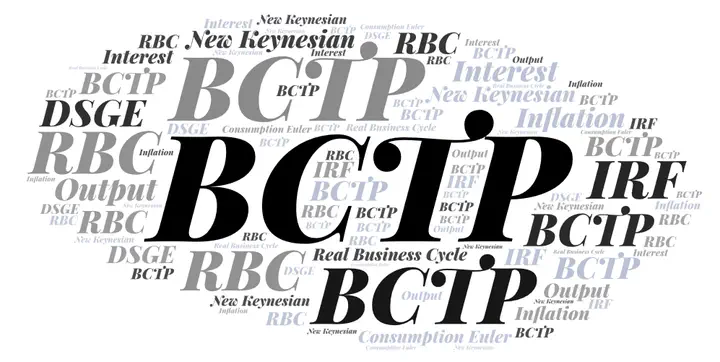Business Cycles Theory and Policy (BCTP)
 Created using https://wordart.com/
Created using https://wordart.com/The course introduces students to two modern theories of business cycles: Real Business Cycle theory and New Keynesian theory. A standard Real Business Cycle model will be formally stated and solved. Afterwards, a standard New Keynesian model will be formally stated and solved. Finally, we use these two models for policy analysis. Students learn how to state and solve modern business cycle models.
Reading, Part I: Main reading: King, Robert, and Sergio Rebelo (2000): “Resuscitating Real Business Cycles,” In Handbook of Macroeconomics, edited by John Taylor and Michael Woodford, volume 1B, North-Holland. Supplementary reading: George McCandless (2008): The ABCs of RBCs, Harvard University Press. Chapter 6.
Reading, Part II: Main reading: Jordi Gali (2008): Monetary Policy, Inflation, and the Business Cycle: An Introduction to the New Keynesian Framework, Princeton University Press. Ch. 1-3. Supplementary reading: George McCandless (2008): The ABCs of RBCs, Harvard University Press. Chapter 10.
Course Outline
Part I: Real Business Cycle Theory
- Stating a standard RBC model
- The problem of the representative firm
- The problem of the representative household
- Log-linearizing the equations characterizing equilibrium
- Applying a solution method for linear rational expectations models
- The equilibrium responses to an aggregate technology shock
Part II: New Keynesian Theory
- Stating a standard New Keynesian model
- The problem of the representative household
- The price setting problem of firms
- Log-linearizing the equations characterizing equilibrium
- The New Keynesian Phillips curve
- Applying a solution method for linear rational expectations models
- The equilibrium responses to a monetary policy shock
- The equilibrium responses to an aggregate technology shock
share: false